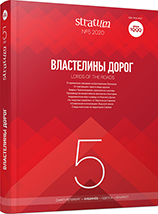К «мобильности» символов. Знак креста на горшке из погр. 20а в Печика-Дувенбек
On the “Mobility” of Symbols. Sign of the Cross on the Pot Found in Grave 20a from Pecica-Duvenbeck
Author(s): Erwin Gáll, Florin Mărginean, Sarah PeterSubject(s): History, Archaeology, Cultural history, Middle Ages, 6th to 12th Centuries
Published by: Издательский дом Stratum, Университет «Высшая антропологическая школа»
Keywords: Romania; Pecica-Duvenbeck; Late Avar Age; symbols; the sign of the cross; ceramics
Summary/Abstract: The rescue excavations performed in Pecica-Duvenbeck in 2018 have led to the discovery of 582 features from different periods, among which two groups of graves that can be dated to the 8th—9th century. An adultus/maturus woman, with an estimated age of over 30, had been buried in the grave labeled 20a, which had a hand-modeled pot deposited as drink or food offering. A sign of the cross with almost equal arms had been incised under the neck of this pot before firing. Theoretical aspects behind our discussion below are connected to the relation between the sign of the cross — what it represents and its connection/lack of connection with the cross shape incised on the pot. The question that arises is, naturally, if this sign can be interpreted as a sign or emblem or if it was a simple meaningless element of decoration.The mobility of symbols, and migration of their meanings from one social-cultural context to another, makes us doubt the interpretation according to which the cross-shaped symbol from Pecica was connected to the Christian world, namely we cannot link the deceased or her micro-community to the Christian faith.
Journal: Stratum plus. Археология и культурная антропология
- Issue Year: 2020
- Issue No: 5
- Page Range: 401-410
- Page Count: 10
- Language: Russian
- Content File-PDF

